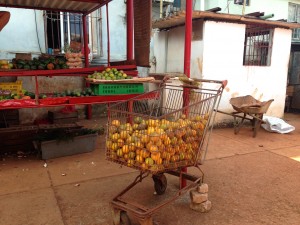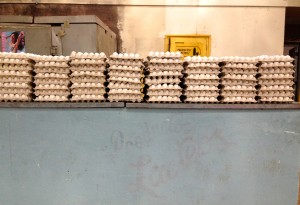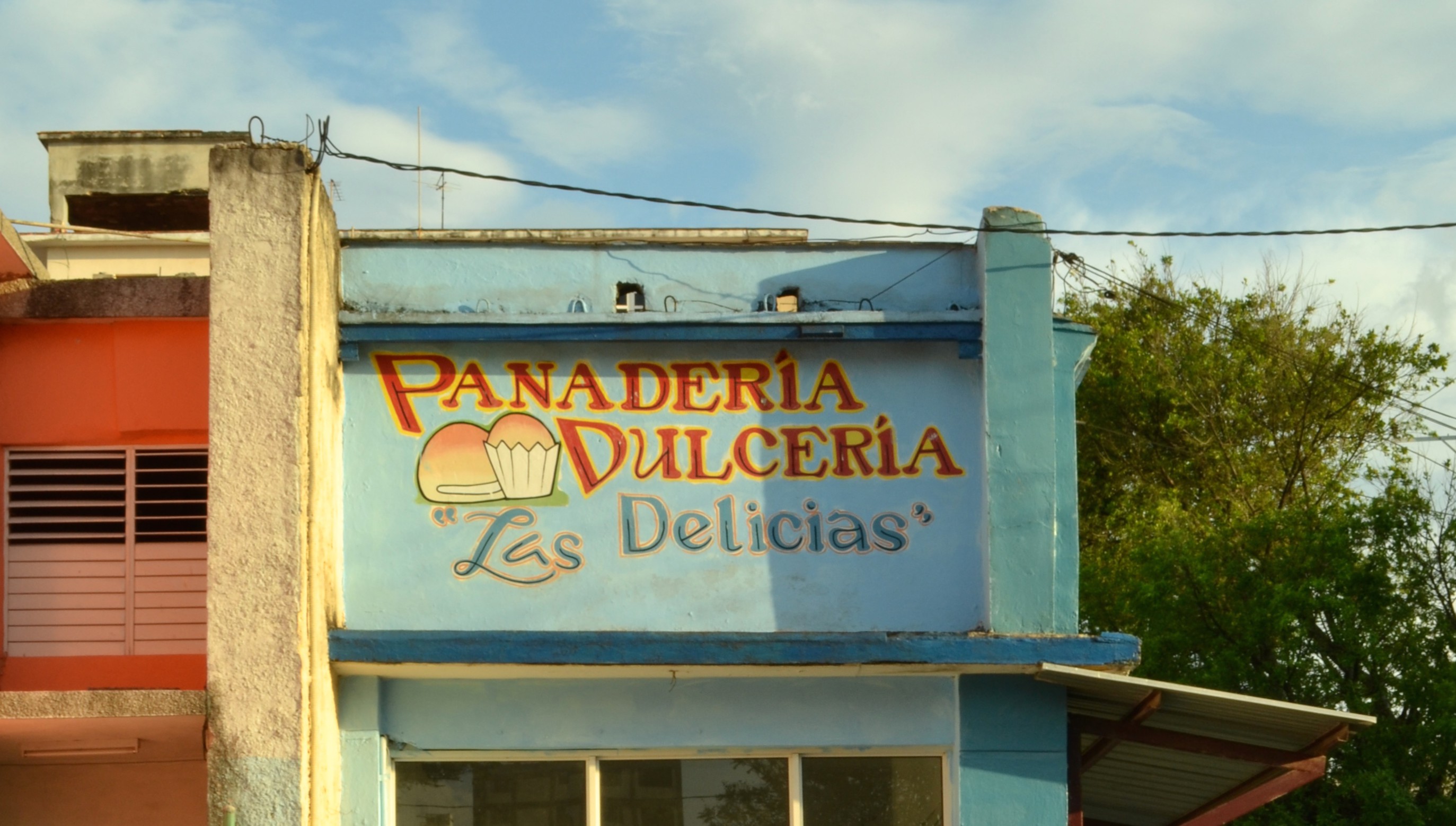
“No es fácil” – it isn’t easy – is the go-to phrase Cubans use to explain just about any life difficulty. Unseen by most people visiting the island, the two-currency system imposed by the Cuban government complicates the purchase of goods and is criticized for creating or perpetuating social inequalities within Cuban society. It isn’t easy. Foreigners incredulously recount stories of taxi drivers and waiters who earn more than doctors and professors, not believing such disparity could exist under socialist income equalization policies. Cuban earnings truly are divergent, however, in part due to a two-currency system that benefits the tourism industry.
The two-currency system was established in 1994 by Fidel Castro’s government after the collapse of the Soviet Union and subsequent economic crisis of the 1990s (still frequently referenced as “el crisis” in Habana). Without the Soviet Union’s financial backing, the Cuban government suddenly lacked hard currency and decided to legalize the American dollar in 1993. In 1994 the Cuban equivalent of the dollar – the CUC – debuted, its value more or less pegged to the U.S. dollar. The U.S. dollar was again taken out of circulation in 2004 and is now taxed at 10 percent on exchanges to redress the U.S. embargo, called “irrational and unjust” by the Cuban government.
The Cuban government tightly controls its equivalent of the dollar (the CUC) to better manage remittances, tourism and the little bit of capitalism allowed on the island. Only in the past few years have Cuban citizens been able to access the CUC; previously it was legal only for foreign nationals. The majority of Cubans operate using pesos cubanos or moneda nacional (CUP, called “pesos”) while imports, exports and tourism are conducted using pesos convertibles (CUC, called “kūk”). CUCs are worth 24 pesos cubanos.
Initially confusing for the similarity in names, the two currencies quickly begin to make sense when buying things in Habana. Although most restaurants, cafes and stores do not specifically advertise prices as pesos or CUC, it becomes fairly obvious which currency is used. For one, any restaurant listing CUC prices is catering to tourists and the few Cubans who can afford to eat food that costs a tenth of average Cuban’s $20 CUC salary. A plate of the popular dish ropa vieja (shredded beef) costs anywhere between $4.00-12.00 in CUC, cheap for a tourist accustomed to paying twice that for a mediocre meal.
Two types of markets — agropecuarios (“agros”) and supermercados (the equivalent of a U.S. supermarket, though in Cuba calling shelves upon shelves of the same brand and good a “supermarket” is a bit of a stretch) — illustrate differences and limitations of the currencies: agros offer fruit and vegetables, occasionally eggs and dried beans. Supermercados offer canned, boxed and bottled items. Milk is consistently unattainable, only available for nursing infants, and the location of frequently deficient items such as soap and toilet paper travels by mouth. Wendy Guerra, a Cuban blogger and writer, referencing Raúl’s increasingly capitalist policies in order to maintain revolutionary social and cultural ideals wrote under the title “El intermitente a la izquierda para doblar a la derecha” – translating as “the occasional under the table transaction to stay in the right.” “Canned food in Cuba costs three times the value in Switzerland. An avocado bought in the diplomercados costs a lot more than the same avocado found in Japan,” she writes. The realities of Cuban purchasing power, shortages of goods, the illegal transactions that take place and the socialist programs wind up pushing people to capitalism.While an American may think $3.50 handles of rum, $2.00 cigarettes or $1.50 gallons of juice at the supermarkets are cheap, the prices must be taken in the context of ration cards awarded per family per week, each only worth up to 25 pesos cubanos ($1 CUC). Cubans wake up and go to sleep monitoring their money and their food. One day they may be able to buy eggs, another day bread. Famed Cuban blogger Yoani Sánchez has criticized the system, noting the two Cubas created by the two-currency system. She writes of one side that calculates daily life in pesos cubanos — the “part of the country that lacks remittances, privileges, families living abroad, private businesses or illegal entries.”

In addition to food, goods imported from abroad — clothes, shoes, soccer balls and home supplies — are all priced in CUC, and at significant markup, sometimes costing 1.5 times more in Cuba than in New York or London. There are even two levels of luxury: Cubans sporting brand Adidas or Puma sneakers have enough liquidity to buy them in Cuba or have a relative bring them while other luxury brands like Louis Vuitton generally signify someone who has traveled abroad themselves, almost an impossible opportunity for most Cubans. The United States’ soft power and Trading with the Enemy Act usually limit foreign economic presence, but some international brands (and their knockoffs) are sold openly in stores.
There is hope. In October 2013, Raúl Castro’s government announced the possible end to the two-currency system in the state’s official newspaper, Granma, the government taking “measures that will lead to monetary and exchange unification.” This will be accomplished by slowly bringing the currencies together, and in December 2013 Cuba’s Vice President Miguel Díaz Canal formally said the CUC would disappear. The government claims combining the peso and the CUC will make calculating economic benchmarks such as labor costs easier and more efficient while avoiding associated inflation. Yoani Sánchez has also observed Cuban’s diverging reactions, determined by which currency they are able to use: the country of pesos cubanos hopes daily life will improve but doesn’t think it can get much worse than it is while the country of CUCs worries about devaluation against the U.S. dollar and the Euro.
At times Cuba can seem schizophrenic in its duality: old cars cost more than new cars because they are popular with tourists; a used car worth $4,000 in the States often costs over $2,000 here in Habana; there is a fairly prominent and active nightlife, yet only an elite number of Cubans are able to access places with $10 CUC covers or even $0.95 mojitos; and a foreigner entering local mercados will sometimes be charged in CUC instead of pesos. The two-currency system effectively divides Cubans from foreigners and Cubans who work within the tourism sector from Cubans who work for the government or for themselves. Maintaining a currency specifically for tourism occults short-term visitors from greater societal problems that remain hidden through the creation of distinct economies. Cubans already face a significant degree of hardships and undoubtedly will face more in the attempt to bring together the peso and the dollar, but, as the Cuban motto goes, “vencerémos” – we will overcome.
